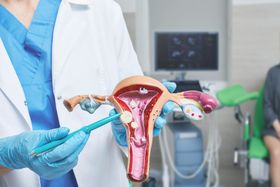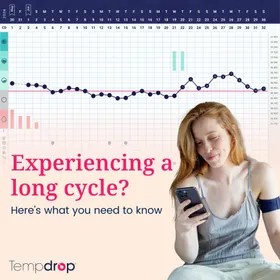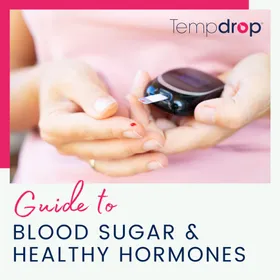Ovarian Cyst vs Fibroid: Understanding the Impact on Fertility
The interplay between ovarian cysts, fibroids, and fertility
Published February 5, 2025.

For many women, the journey to understanding their reproductive health is filled with terms and conditions that can often seem confusing and overwhelming. Among these, ovarian cysts and fibroids stand out as two prevalent conditions that can potentially impact fertility.
Approximately 7% of women worldwide develop ovarian cysts during their lifetime, while up to 70% develop fibroids, but only 25% experience symptoms during their reproductive years.
We had the privilege of discussing women's health and wellness with Lisa Cartier, a knowledgeable professional in this field. As we navigate through this topic, we aim to provide clarity and empower women with the knowledge to make informed decisions about their reproductive health.
Fibroids vs Ovarian Cysts: Impact on Reproductive Health
Uterine fibroids are influenced by estrogen levels in the body. Their growth is often attributed to the estrogen present, making it essential to monitor and understand any estrogen imbalances, such as estrogen dominance.
On the other hand, ovarian cysts develop due to incomplete ovulation triggers, resulting in the formation of cysts on the ovary that might grow, be released, or remain static.
Can You Get Fibroids on Your Ovary?
Although fibroids are commonly associated with the uterus, they can also develop on the ovaries. Ovarian fibroids may cause the ovary to twist or lead to hemorrhaging, but often remain asymptomatic and go unnoticed for extended periods of time.
The primary concern with ovarian fibroids is their potential to be malignant. While most are benign, they have a higher likelihood of being cancerous compared to uterine fibroids.
Possible causes for fertility issues:
- Large Fibroids: Can hinder conception and increase the risk of miscarriage due to their size
- Estrogen Levels: High levels can be problematic for fertility
- Ovarian Cysts: Their complexity can make them harder to diagnose and treat
- PCOS (Polycystic Ovarian Syndrome): Requires significant effort to manage, especially in stabilizing blood sugar levels
- Consistency: Occasional fibroids might not be as problematic as consistent ovarian cysts for fertility
Understanding the Impact of Cysts on Menstruation
Although ovarian cysts typically do not affect the ovary's function or menstrual cycle, the impact on menstruation can vary based on the underlying cause of the cyst.
Some women may experience a single cyst rupture, while others may have recurring issues due to conditions such as PCOS, a metabolic disorder that can cause irregular menstrual cycles or even prolonged periods without menstruation.
The absence of ovulation can disrupt the menstrual cycle and overall reproductive health.
» Find out more about surprising causes of irregular periods
The Importance of Family History and Hormonal Birth Control
Family history is essential when factoring in aspects like:
- Gut health
- Liver detoxification processes
- Blood sugar levels
- Overall lifestyle choices
- Nutrition
The prolonged effects of hormonal birth control can linger in the body and may even be inherited by subsequent generations, which could negatively impact one's reproductive health. The use of hormonal birth control, while beneficial for some, can lead to complications.
"Its suppressive effect on the reproductive system doesn't address the root causes of health issues and can disrupt the natural progression of hormone regulation."
Ways to Optimize Fertility Health
For those dealing with ovarian and fibroid cysts, understanding the interconnectedness of various health aspects is helpful. The process of getting rid of ovarian cysts and fibroids can be overwhelming, but we are here to help with some essential steps and practices.
- Track Your Cycle: Keeping track of your menstrual cycle offers vital information. Recognizing changes and patterns allows you to address issues and maintain a connection with your body.
- Self-awareness is Key: Stay alert to any shifts in your life, enabling you to take proactive measures during challenging times.
- Understand Your Genetic Predisposition: Tailor your nutrition and lifestyle choices based on your genetics to optimize your health.
- Regular Screenings and Check-ups: Pairing these with personal cycle tracking offers a holistic view of your hormonal health.
- Value of Early Detection: Prioritizing early detection can pave the way for more effective management and potentially less invasive treatments.
- Pain Management: While prioritizing comfort is essential, consider natural remedies that support your body without compromising gut health, given that all medications have side effects.
- Prioritize Gut Health: Emphasize a diet abundant in fiber, probiotics, and nutritious foods to bolster gut health.
- Blood Sugar Balance: Rather than a singular check, consistently monitor your blood sugar levels to gain a comprehensive understanding of its fluctuations.
- Sleep and Restoration: Evaluate your sleep habits and make adjustments as needed to ensure restful sleep.
» Struggling with PCOS and food? Learn more about what to avoid and what to enjoy
Taking Charge of Your Hormonal Health
The complexities of reproductive health, particularly concerning ovarian cysts and fibroids, play a pivotal role in a woman's fertility and overall well-being. With a significant percentage of women experiencing these conditions, it's crucial to understand their origins, impacts, and potential treatments.
In this journey, Tempdrop emerges as a valuable tool to empower women with insights about their fertility. Here's why Tempdrop stands out:
- Comprehensive Monitoring: It continuously measures your core temperature while you sleep to detect ovulation and you can keep track of changes in your cycle such as heavy bleeding or pain.
- Personalized Insights: Its patented algorithm filters out disturbances to provide accurate results based on your unique temperature patterns.
- Holistic Approach: By combining temperature readings with other fertility symptoms, it aids in pinpointing your fertility window with precision.
By incorporating Tempdrop into your routine, you're not just staying informed but also taking a proactive approach to prioritize your well-being and regular health check-ups.





